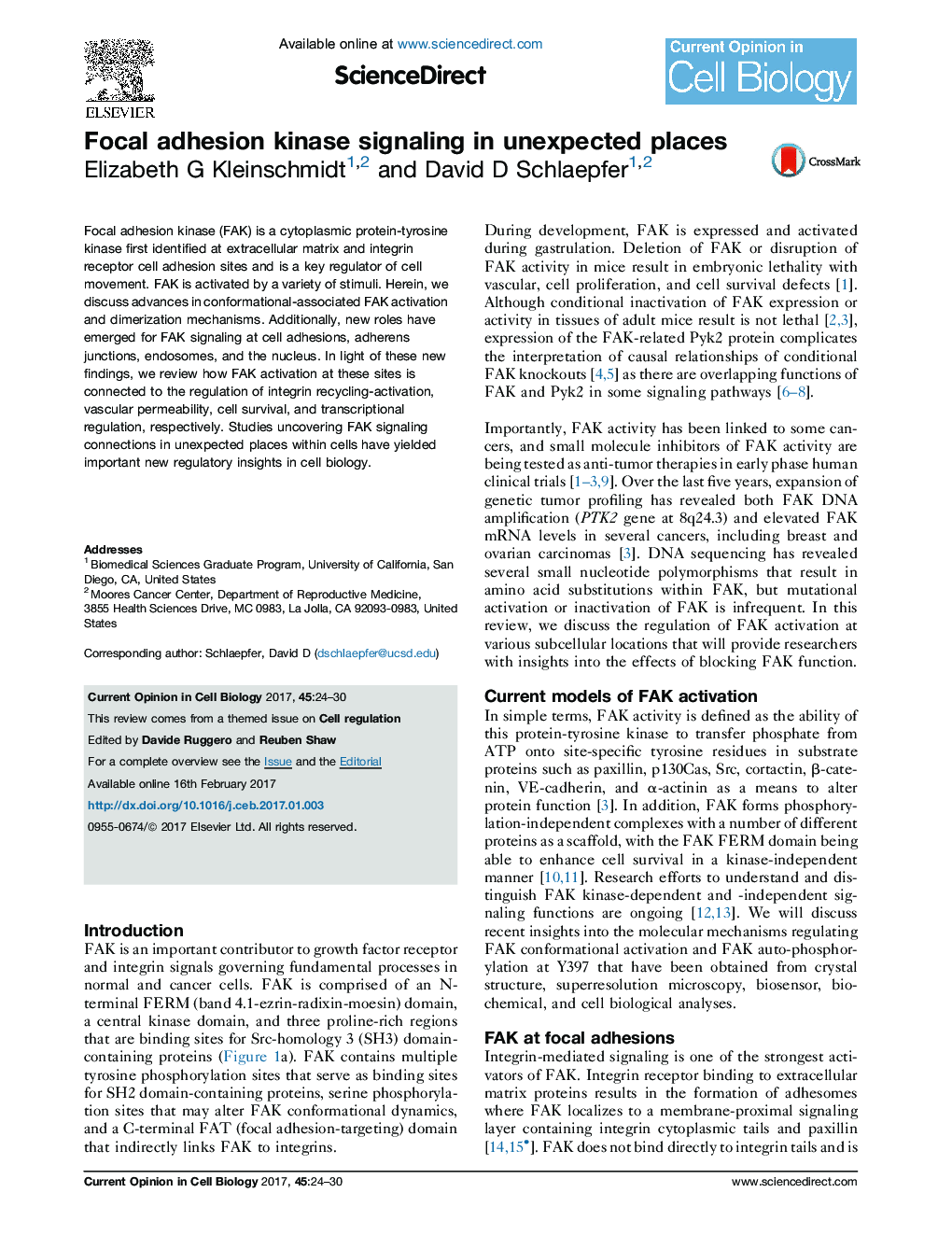| Article ID | Journal | Published Year | Pages | File Type |
|---|---|---|---|---|
| 5531088 | Current Opinion in Cell Biology | 2017 | 7 Pages |
â¢FAK undergoes conformational activation and dimerization.â¢FAK activation can occur at adhesions, on endosomes, and in the nucleus.â¢FAK localizes to adherens junctions and can promote their disassembly.â¢Nuclear FAK can alter targets through kinase-dependent and -independent mechanisms.â¢The gene name for FAK (PTK2) reflects a more versatile role in cells.
Focal adhesion kinase (FAK) is a cytoplasmic protein-tyrosine kinase first identified at extracellular matrix and integrin receptor cell adhesion sites and is a key regulator of cell movement. FAK is activated by a variety of stimuli. Herein, we discuss advances in conformational-associated FAK activation and dimerization mechanisms. Additionally, new roles have emerged for FAK signaling at cell adhesions, adherens junctions, endosomes, and the nucleus. In light of these new findings, we review how FAK activation at these sites is connected to the regulation of integrin recycling-activation, vascular permeability, cell survival, and transcriptional regulation, respectively. Studies uncovering FAK signaling connections in unexpected places within cells have yielded important new regulatory insights in cell biology.
Graphical abstractDownload high-res image (132KB)Download full-size image
